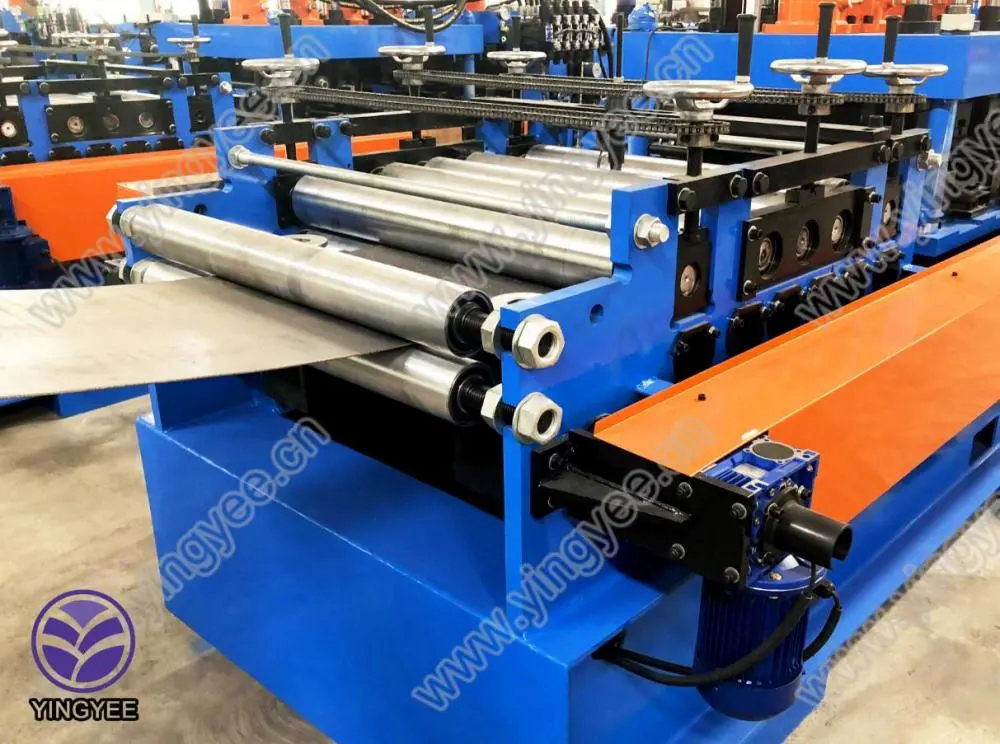
The Evolution and Importance of Galvanizing Pipe Making Machines
In the realm of industrial manufacturing, the production of galvanized pipes plays a significant role in various sectors, including construction, agriculture, and infrastructure. Galvanized pipes are essential due to their enhanced resistance to corrosion, which extends their lifespan and makes them ideal for outdoor use. The technology behind galvanizing pipe making machines has significantly evolved over the years, leading to improvements in efficiency, quality, and sustainability.
The process of galvanization involves coating steel or iron with a layer of zinc to protect it from rust and degradation. This process is crucial in regions with high humidity or corrosive environments. With the introduction of galvanizing pipe making machines, manufacturers can produce galvanized pipes in large quantities while maintaining high standards of quality.
Historically, pipe manufacturing was a labor-intensive process, often resulting in inconsistencies and a high rate of defects. Early machines were primarily mechanical, requiring substantial manual input. However, advancements in technology have led to the development of automated galvanizing pipe making machines. These machines incorporate state-of-the-art technologies such as programmable logic controllers (PLCs) and advanced robotics, allowing for seamless operation, precision, and reduced human error.
One of the significant advantages of modern galvanizing pipe making machines is their capability to implement various production methods, including hot-dip galvanizing, electro-galvanizing, and continuous galvanizing
. Each method offers unique benefits tailored to specific applications. For instance, hot-dip galvanizing provides a thicker coating, ideal for outdoor construction, whereas electro-galvanizing allows for a smoother finish, suitable for applications that require aesthetic considerations.
Furthermore, the energy efficiency of galvanizing pipe making machines has improved dramatically. With industry standards shifting towards sustainable practices, manufacturers are increasingly focusing on minimizing their environmental footprint. Modern machines are designed to use less energy and water, and they often incorporate recycling systems that reclaim zinc and other materials used during the galvanization process. This not only reduces waste but also lowers production costs, making manufacturers more competitive in the global market.
The automation of galvanizing pipe making machines has also enhanced safety and working conditions for employees. With machines performing the more hazardous tasks associated with pipe production, the risk of workplace accidents has significantly decreased. Additionally, the ergonomic design of modern machines helps to minimize strain on workers, further improving overall workplace conditions.
Quality control is another critical aspect of the galvanizing process. Advanced machines are equipped with sensors and monitoring systems that provide real-time feedback during production. This allows manufacturers to detect issues early in the process, ensuring that the final product meets the necessary standards. The integration of artificial intelligence and machine learning algorithms has further revolutionized quality control, enabling predictive maintenance and reducing downtime.
As we look to the future, the role of galvanizing pipe making machines will only grow as the demand for sustainable and durable construction materials increases. Innovations in machine design and functionality will continue to emerge, further enhancing the production capabilities and efficiencies within the industry. The continued focus on sustainability, combined with technological advancements, promises to create a robust framework for the future of galvanized pipe manufacturing.
In conclusion, galvanizing pipe making machines have come a long way from their mechanical predecessors. With advancements in technology leading to increased efficiency, improved safety, and reduced environmental impact, these machines are now at the forefront of industrial production. As society continues to demand more resilient and sustainable infrastructure, the importance of galvanized pipes and the machines that produce them will undoubtedly remain pivotal in the manufacturing landscape.